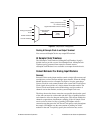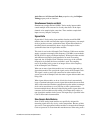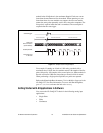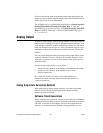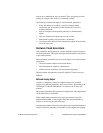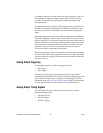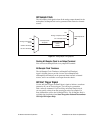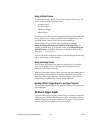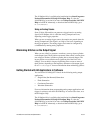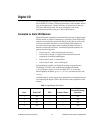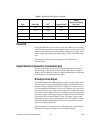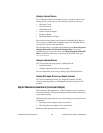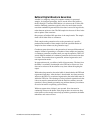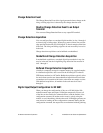NI cDAQ-9172 User Guide and Specifications 24 ni.com
Using a Digital Source
To use ao/StartTrigger, specify a source and a rising or falling edge. The
source can be one of the following signals:
•A software pulse
• Any PFI terminal
• ai/ReferenceTrigger
• ai/StartTrigger
The source also can be one of several internal signals on the NI cDAQ-9172
chassis. Refer to Device Routing in MAX in the NI-DAQmx Help or the
LabVIEW Help in version 8.0 or later for more information.
The NI-DAQmx Help is available after installation from Start»
Programs»National Instruments»NI-DAQ»NI-DAQmx Help. To
view the LabVIEW Help, in version 8.0 or later, select Help»Search the
LabVIEW Help in LabVIEW. Alternately, to download the LabVIEW
Help, go to
ni.com/manuals.
You also can specify whether the waveform generation begins on the rising
edge or falling edge of ao/StartTrigger.
Using an Analog Source
Some C Series I/O modules can generate a trigger based on an analog
signal. In NI-DAQmx, this is called the Analog Comparison Event,
depending on the trigger properties.
When you use an analog trigger source, the waveform generation begins on
the first rising or falling edge of the Analog Comparison Event signal,
depending on the trigger properties. The analog trigger circuit must be
configured by a simultaneously running analog input task.
Routing AO Start Trigger Signal to an Output Terminal
You can route ao/StartTrigger to any output PFI terminal. The output is an
active high pulse.
AO Pause Trigger Signal
Use the AO Pause trigger signal (ao/PauseTrigger) to mask off samples in
a DAQ sequence. When ao/PauseTrigger is active, no samples occur, but
ao/PauseTrigger does not stop a sample that is in progress. The pause does
not take effect until the beginning of the next sample.




